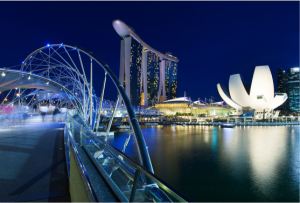The Most Expensive Cities in the World

The world’s most expensive cities attract visitors for all the right reasons. Whether it’s the financial centres of Singapore and Zurich, the cultural hubs of Paris and London or the super-rich playground of Monaco, each has something quite unique to offer. Interestingly though, Mercer’s annual Cost of Living survey points to some trends you might not have expected.
Whilst a few of the cities in the world’s top ten most expensive will be of no surprise to you, the cost of living is incredibly high in some places you might have thought otherwise. For example, the number one most expensive city to live in is Luanda, Angola. With the price of goods and safety extremely costly in a city heavily reliant on the oil industry, the cost of living has risen way beyond the average.
Geneva, Singapore and Zurich have all moved into the top five, unsurprisingly for cities hugely significant in the world of financial services.
However, there are different measurements considered for a global cost of living analysis. The EUI has an altogether different top ten to Mercer’s survey, representing a more traditional view of the world’s most expensive cities. Singapore is at the top spot, with Paris a close second. Being the most visited city in the world, the French capital has seen prices for food and other commodities rise as the tourist flood in. Other popular holiday destinations such as London and New York are expected to move up the list in the coming years.
What does all this mean for locals and tourists?
As certain cities become more popular with visitors, be it for tourism or business purposes, the cost of living rises. This often makes it difficult for tourists and locals alike, with the latter struggling to meet ever increasing rents, and the former being limited in what they can do once they arrive. London is a perfect example, where property prices are slowly driving locals further into the suburbs, leaving behind accommodation which only the super-rich can afford. Earlier this year there were several stories of people actually commuting from the likes of Barcelona and Madrid, and still being able to save more than if they were renting in London.
It’s a fact that cultural centres such as Paris, London and New York will remain among the top tourist destinations no matter how expensive they become. The pull of certain internationally known landmarks is never going to dissipate. What might happen within the tourist industry though, is that visitors may become more avid users of peer to peer accommodation sites such as HomeAway or other sharing platforms such as Uber. These are simple ways in which your average tourist can save money on both accommodation and transport, which would otherwise be an expensive addition on top of food and general tourist activities. This will in turn see other industries, such as the hotel trade, or in London’s case, Black Cab drivers, lose out on the lucrative tourism market.
Whilst this is sad news for traditional hotel and transport industries, customers can’t be blamed for seeking better value as prices continue to rise.

